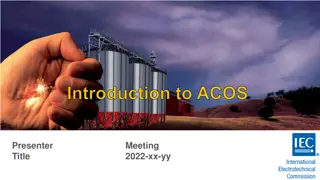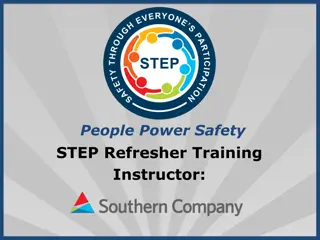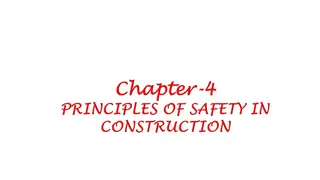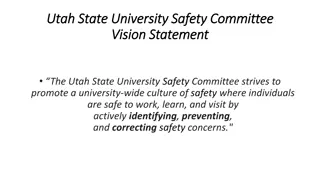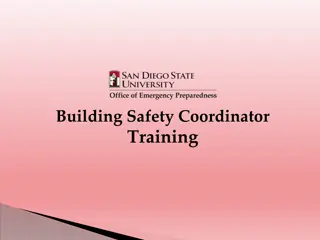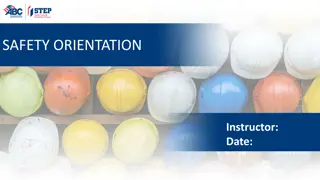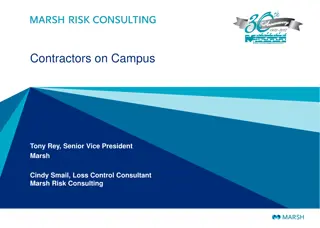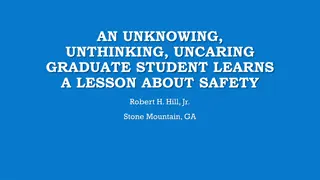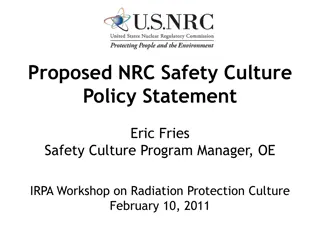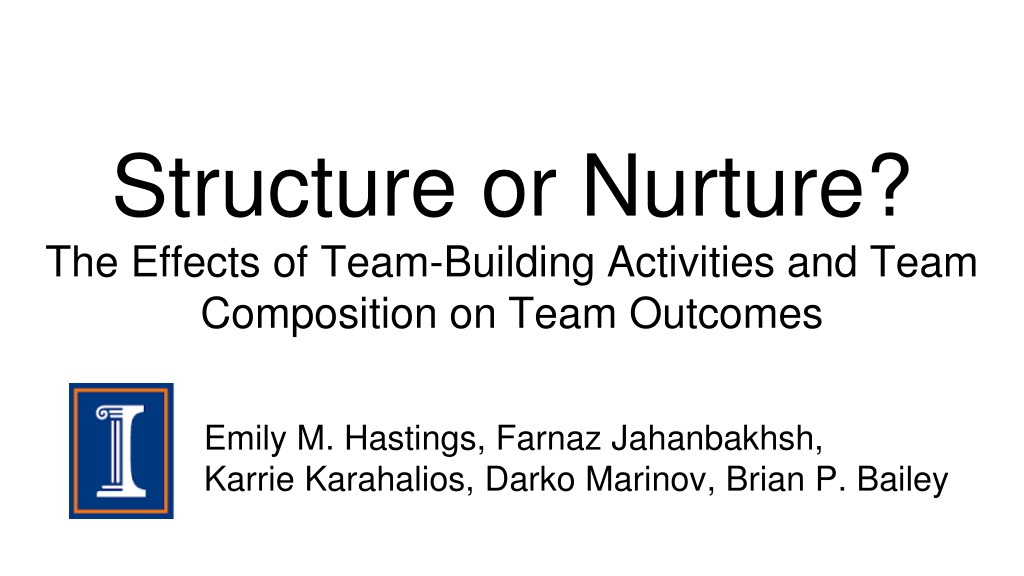
Effects of Team-Building Activities and Composition on Team Outcomes
This study delves into the impact of team-building activities and team composition on overall team outcomes, focusing on strategies for promoting positive team experiences and performance. The research explores the significance of criteria-based team formation, psychological safety, and the balance between structure and nurture within teams. By examining research questions related to team performance, psychological safety, and composition strategies, valuable insights are gained on enhancing teamwork effectiveness.
Download Presentation

Please find below an Image/Link to download the presentation.
The content on the website is provided AS IS for your information and personal use only. It may not be sold, licensed, or shared on other websites without obtaining consent from the author. Download presentation by click this link. If you encounter any issues during the download, it is possible that the publisher has removed the file from their server.
E N D
Presentation Transcript
Structure or Nurture? The Effects of Team-Building Activities and Team Composition on Team Outcomes Emily M. Hastings, Farnaz Jahanbakhsh, Karrie Karahalios, Darko Marinov, Brian P. Bailey
How should instructors promote positive team outcomes? 2
Team Composition Criteria-based team formation: strategically select team members to achieve certain compositions Skill diversity (e.g., Brickell et al. 1994, Horwitz and Horwitz 2007) Balanced personality types (e.g., Lykourentzou et al. 2016) Balanced genders (e.g., Jehn, Northcraft, and Neale 1999) Many more 3
Team-Building Nurture teamwork after the team is formed Psychological safety: shared belief that the team is safe for interpersonal risk-taking (Edmondson 1999) Recent article (Duhigg 2016) suggested that psychological safety contributes more to industry teams success than team composition does 5
Research Questions RQ1: How do composition strategies and team-building affect student team performance and team experience? RQ2: To what degree do team-building and team composition strategies influence psychological safety for student teams? RQ3: What is the relationship between psychological safety and team performance and experience? 6
Team Formation Strategy Criteria-based Random Task-focus Activity Focus Team-focus 7
Team Formation Strategy Condition 1: Criteria-based Condition 2: Random 8
Team Focus Activities Aimed at nurturing psychological safety within teams Initial Activity Midpoint Activity 9
Task Focus Activities Emphasized producing an outcome, rather than team relationships - Fellowship of the Designers - 4 + 2 = 7 - Will Code For Money Initial Activity Midpoint Activity 10
Measures Objective Subjective Project Grades Perceived Performance Satisfaction with Team Assignment Psychological Safety (Edmondson 1999) Conflict (Jehn, Northcraft, & Neale 1999) Cohesiveness (Carless & De Paola 2000) 11
Results 12
Potential Explanations Expectation Effect Prior work may not be generalizable to our study context Using multiple criteria does not necessarily stack benefits 14
RQ2: Effects of Composition and Activity on Psych. Safety 15
Potential Explanations Nature of courses helped psychological safety develop organically Both activities helped develop interpersonal relationships 16
RQ3: Relation of Psychological Safety to Outcomes Correlated with almost all subjective measures No significant relation to project grades Potential explanations: Different context from prior literature (incentive structures, project length, etc.) Potential for behaviors that negatively influence performance 17
Implications for Instructors Structure or Nurture may be a false choice. Should not use team formation tools as black box to increase performance, but for other benefits Can incorporate activities to offset initial unfamiliarity Building psychological safety is important for team experience but won t automatically improve performance 18
Implications for Tool Designers Implement configuration templates that link directly with the literature Searchable knowledge base ... 19
Contributions Deeper empirical understanding of how algorithmic team formation, team building activities, and psychological safety impact team performance and satisfaction in authentic learning environments Practical implications for the design and deployment of team formation tools Contact info: Emily Hastings (ehstngs2@illinois.edu) Farnaz Jahanbakhsh (farnazj@mit.edu) 20
Extra Slides 21
Additional Analyses Examining the goodness scores given by the tool to randomly assigned teams vs those formed by the tool Criteria-based teams scored higher on gender (t(34.18)=3.14, p<0.01), commitment levels (t(34.89)=3.45, p<0.01), and skillsets (t(33.18)=4.96, p<0.01) Random teams had higher variation Hand examined skillsets 22
Statistical Analysis Developing linear mixed effect models of the form: Outcome variable ~ composition * activity focus + (1| class) + (1| team) Performing a Wald-Chi Square test on the fitted model 23






